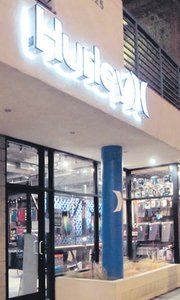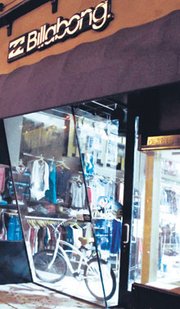Surf and Skate Retailers Are Cautiously Optimistic
Surf and skate retailers are optimistic post-recession, but the future is hazy.
Call it the moment after the wipeout.
Surf retailers have been seeing their sales rebound after several years of tough business during the economic downturn, according to a recent survey released by the Surf Industry Manufacturers Association.
The forecast is good for an industry that caught some tough breaks. Between 2008 and 2010, 1.7 percent of independent surf and skate shops shuttered across America, according to SIMA.
The industry lost some mid-tier retail chains, too, including Orange County, Calif., specialty chain Beach Bums, which shuttered its more than 11 doors in 2010, and action sports– friendly retailer Metropark, which shuttered its nearly 70 locations earlier this year.
However, the summer was good for core shops. According to market-research firm AA Data Co.'s quot;ActionWatch Retail Panelquot; study, sales in July increased more than 14 percent compared with la st year. The increase in sales supported an optimistic outlook, said Duke Edukas, co-owner of Surfside Sports in Costa Mesa, Calif., and the West Coast chairman of the Board Retailers Association trade group. But recent history and a stagnant macroeconomic outlook gave many retailers cause for concern.
quot;The industry is in a lot of flux, and it is a little scary,quot; Edukas said.
On one end of the spectrum are established surf and skate specialty chains and brands, which are coming out of the recession with ambitious expansion plans. Irvine, Calif.–based Tilly's filed for an IPO in July, with $100 million requested in the IPO, partly to finance an expansion of its fleet of 126 stores. Tilly's intends to open 13 stores by the end of the year and 20 in 2012. Everett, Wash.– based Zumiez Inc. plans to open approximately 45 new stores by January 2012.
Quiksilver Inc. is scheduled to introduce a new retail concept, 585 Boardriders, in Los Angeles' Venice neighborhood this month. In July, the company opened a boutique for its Waterman label in Newport Beach, Calif., and it is getting ready to debut a host of new lines in 2012 under a division called Emerging Brands.
Growth strategies
Many surf manufacturers responded to the retail downturn by opening more branded stores or acquiring retail chains. Billabong International Ltd. has gone on the biggest shopping spree, acquiring retail chains in Australia, the United Kingdom and North America. In 2010, Billabong purchased Hermosa Beach, Calif.–based Becker Surf & Sport for an undisclosed amount. The same year, it acquired Canadian retailer West 29 for $99 million (Canadian).
Billabong's retail blew up from 380 stores in fiscal 2010 to 639 stores in its current fiscal year. The growth portrays a wild year for retail, according to a blog by independent analyst Jeff Harbaugh, who runs quot;Jeff Harbaugh's Market Watch.quot; quot;I suspect the accelerated growth was opportunistic,quot; he wrote in a recent blog about Billabong. quot;They could hardly ask West 49, or any of the other retail acquisitions, to wait and be for sale next year.quot;
Some boardsports brands—including Billabong, Volcom and Vans—have opened long-term shops-in-shop in high-profile boutiques, including Jack's Surf in Huntington Beach, Calif.; Surfside and ZJ Boarding House in Santa Monica, Calif.; and Coastal Edge in Virginia.
quot;It builds out a brand experience in every store,quot; said Doug Palladini, president of the Surf Industry Manufacturing Association. quot;It makes a shopping destination for action sports and gives a meaningful alternative to the H&M billboards, which advertise $9 jeans.quot;
The footprints of shops-in-shop range from the size of a small trade show booth to the size of a boutique storefront, which is what Hurley did for its shop-in-shop at ZJ Boarding House and Volcom did for its in-store shop at Huntington Surf & Sport in Huntington Beach.
For these shops-in-shop, vendor-retailer partnerships are very close, especially for shops located close to the headquarters of these fashion labels. Merchandisers from the clothing label visit the shops-in-shop once each week to spruce them up, Edukas said. Company executives also visit the shopsin- shop frequently. Retailers and their staffs also must attend in-depth product and sales meetings run by their vendor partners. Shops-in-shop have been increasingly popular in recent years, and focused vendor attention has helped change a culture at independent boardsports shops, Edukas said.
quot;Ten years ago, it was self-service— just ring it up,quot; Edukas said of the sales culture at most boardsports retailers. quot;Now, it is so customer service oriented, you are their personal shopper. Interaction with the customer is essential.quot;
Indie return
But the rise in branded shops-inshop and vertical retail has squeezed smaller and emerging brands, said Erik Paulsen, chief executive of Costa Mesa, Calif.–based brand Tavik. There's less retail shelf space to go around.
They have to fight harder for space for remaining independent stores, Paulsen said. It is crucial to find stores that focus on new brands. E-commerce stores have been increasingly valuable. quot;They are accepting newer brands, and they can extend your reach worldwide. It is crucial for new brands to partner with big [e-commerce] retailers such as Karmaloop.com and Swell [www.swell.com],quot; he said. Swell was acquired by Billabong in 2009.
Independent retailers also continue to develop new concepts for people who love boardsports. There's the alternative surf shops represented by boutiques such as Mollusk—with locations in San Francisco; the Venice Beach neighborhood of Los Angeles; and Brooklyn, N.Y.—and Shelter Surf in Long Beach, Calif.
Graham Day opened Shelter Surf in 2007. The store is devoted to products from indie and emerging surf labels and eschews the styles of popular surf and skate brands, Day said. Relying mostly on word-of-mouth, Shelter Surf has attracted a steady stream of surf aficionados looking for indie surf labels and something new.
quot;We're not knocking them dead,quot; Day said. quot;We're still here, and we're introducing new products. We have so much fun doing this. That's the reason we do it.quot;
























